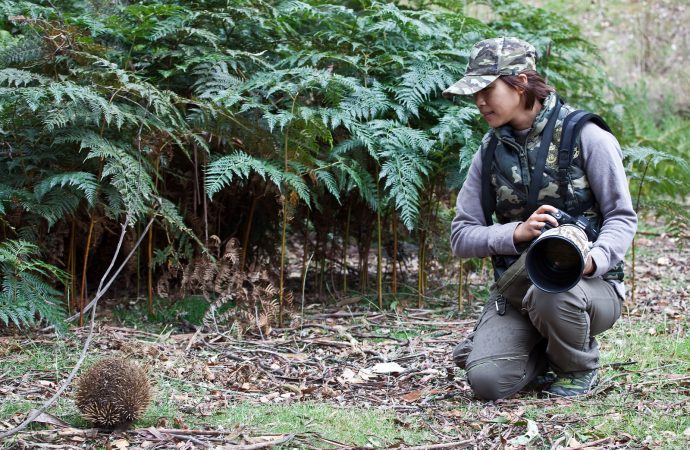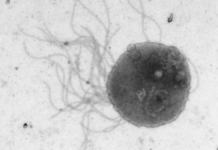Monday, the 29th, marked the beginning of the EU Green Week, an event organized by the European Commission’s Directorate-General for Environment to discuss environmental policies. This year, the focus is “Green jobs for a greener future.” The organizers stressed how traditional specializations will be characterized by additional sets of new skills. Being able to deal with technology is certainly one of them, and many jobs in the environmental sciences are already adopting these innovative tools.
People working in this sector are no longer restricted to field work and laboratory analyses. In this world, where we no longer program machines, but teach them, this means more than just filling in Excel tables and writing reports. In fact, environmental scientists can leverage artificial intelligence to deal better and faster with environmental issues, like global warming. Cognitive computing has the power to completely revolutionize their workflow, making it more efficient in terms of time, resources, and accuracy. How? Let’s explore some of the primary applications used and under development.
1. Recognizing animals in wildlife videos
There’s much more than kitten videos
If Google’s Artificial Brain managed to find cat videos, it can go beyond that and recognize tigers, wildcats, and lions. As you may remember from the Pantanal Diaries, one of the activities in wildlife conservation is monitoring species with camera traps, which take hundreds of shots around the clock. Once images are collected, they then need to be analyzed by filling in tables on the type of animals recorded.
This rather tedious process can be automated: we can teach machines to detect and classify flora and fauna from camera trap videos and images. Researchers even got creative, treating the computer like a kid and letting it learn by… showing it BBC documentaries (Nurani Venkitasubramanian et al., 2017)!
If you think automation won’t affect much the job of environmental researchers, you’re wrong: another brand-new study estimated that their system, which automates animal identification, performed like crowdsourced teams of human volunteers (accuracy of 96.6%). Moreover, it can save approximately 8.2 years of human labeling effort (over 17,000 hours) on a 3.2- million-image dataset (Norouzzadeh et al., 2017).
Automated animal identification performs at the same 96.6% accuracy level of human volunteers, saving approximately 8.2 years of human labeling effort on a 3.2- million-image dataset
2. Audio-based identification of birds
Monkey see, monkey… hear
We may find it difficult to think about the five senses in bots. Yet, if computers can see and interpret wildlife images, they can hear and analyze audio files as well. That’s the principle of BirdCLEF 2016, a project to automatically classify bird songs. Recordings of 999 bird species were used to teach and test the learning machine. At the end, the software achieved a precision of approx. 43% (Tóth and Czeba, 2016). The researchers should improve the system to reach fully automated classification; nonetheless, this is not a bad result for a newbie, even if digital. After all, how many bird species can you identify, based on their singing?
3. Fighting wildlife crime
Green security games: rangers vs. poachers
There may be situations when it’s necessary to track human movements, instead of animals’. Two artificial intelligence-based solutions are already doing so, by helping rangers in charge of stopping poachers, illegal trespassers of wildlife territories.
One is the Domain Awareness System (DAS), developed by Vulcan Technology and currently being used in Africa. The other is the Protection Assistant for Wildlife Security (PAWS), used in Malaysia and created by Yang et al. (2014) at the University of Southern California, U.S. Under continuous improvement (Fang et al., 2016), it adds game theory principles to cognitive computing, in order to become more strategic: the software continually adapts the poacher (adversary) behavioral models to collected environmental crime data. Knowing that machines already won at the strategy game Go, we can presume we’re on the way to end poaching.
4. Anticipating environmental threats
Predict to protect
Environmental scientists aren’t new to predictive models. These are particularly useful, for instance, to evaluate the possible risks -in terms of hazard (or toxicity) and exposure- of chemicals to humans, animals, or the entire ecosystem. In fact, besides the fact that animal testing is expensive, it is not always feasible to experimentally assess the hazard and toxicity of a chemical, or of its by-products. Therefore, computer simulations are essentials in this field. Advances in artificial intelligence can help improve the outcomes of these predictive models so that they better match with reality.
A remarkable recent application of machine learning comes from the U.S., where a research group developed prediction models that could estimate the physicochemical properties of environmental chemicals. These models are available online and can be used by anyone to “make predictions on new chemical sets, improve toxicity models, an1d inform hazard/risk characterization” (Zang et al., 2017).
Together with chemical properties, predictions on major changes in our ecosystem are extremely valuable. To understand and predict where, how, and why deforestation happens could help us mitigate one the main threats to our planet. To approach this issue, researchers from the University of Queensland, Australia, developed a group of models that could predict deforestation in Mexico and Madagascar. The scientists fed the models with different datasets, e.g. for terrestrial eco-regions, protected areas, and population distribution. All the algorithms were extremely accurate: the statistical value “Area Under the Curve” (AUC), which equals to 1 in a perfect model, was always above 0.8 (Mayfield et al., 2017).
The results of this study will help to assess deforestation worldwide. In particular, it will surely help participants in the Kaggle competition “Planet: Understanding the Amazon from Space.” This was launched on April 20 by the designer and builder of the world’s largest constellation of Earth-imaging satellites, Planet. The aim is to understand deforestation in the Amazon. Kagglers are analyzing the data collected by Planet’s Flock 2 satellites in the Amazon basin (Brazil, Peru, Uruguay, Colombia, Venezuela, Guyana, Bolivia, and Ecuador). If you’re interested in participating, you better hurry up: the final submission of the algorithm is due July 20!
These are the main areas where environmental researchers are applying machine learning, but the possible applications are likely to become more numerous. It’ll be you, young students, who will decide how to apply artificial intelligence in your future green job to create a greener future. What are your ideas?
This article was also published at Balzano – Artificial Intelligence Blog. Read it here and discover more about Artificial Intelligence.
References:
Nurani Venkitasubramanian, A., Tuytelaars, T., & Moens, M. F. (2017, January). Learning to recognize animals by watching documentaries: using subtitles as weak supervision. In Proceedings of the 6th Workshop on Vision and Language (VL’17) at EACL 2016.
Norouzzadeh, M. S., Nguyen, A., Kosmala, M., Swanson, A., Packer, C., & Clune, J. (2017). Automatically identifying wild animals in camera trap images with deep learning. arXiv preprint arXiv:1703.05830.
Tóth, B. P., & Czeba, B. (2016). Convolutional neural networks for large-scale bird song classification in noisy environment. In Working notes of CLEF conference.
Yang, R., Ford, B., Tambe, M., & Lemieux, A. (2014, May). Adaptive resource allocation for wildlife protection against illegal poachers. In Proceedings of the 2014 international conference on Autonomous agents and multi-agent systems (pp. 453-460). International Foundation for Autonomous Agents and Multiagent Systems.
Fang, F., Nguyen, T. H., Pickles, R., Lam, W. Y., Clements, G. R., An, B., … & Lemieux, A. (2016, March). Deploying PAWS: field optimization of the protection assistant for wildlife security. In Twenty-Eighth IAAI Conference.
Zang, Q., Mansouri, K., Williams, A. J., Judson, R. S., Allen, D. G., Casey, W. M., & Kleinstreuer, N. C. (2017). In Silico Prediction of Physicochemical Properties of Environmental Chemicals Using Molecular Fingerprints and Machine Learning. Journal of chemical information and modeling, 57(1), 36-49.
Mayfield, H., Smith, C., Gallagher, M., & Hockings, M. (2017). Use of freely available datasets and machine learning methods in predicting deforestation. Environmental Modelling & Software, 87, 17-28.
Image Credit: Sammy Sam /Wikimedia Commons





